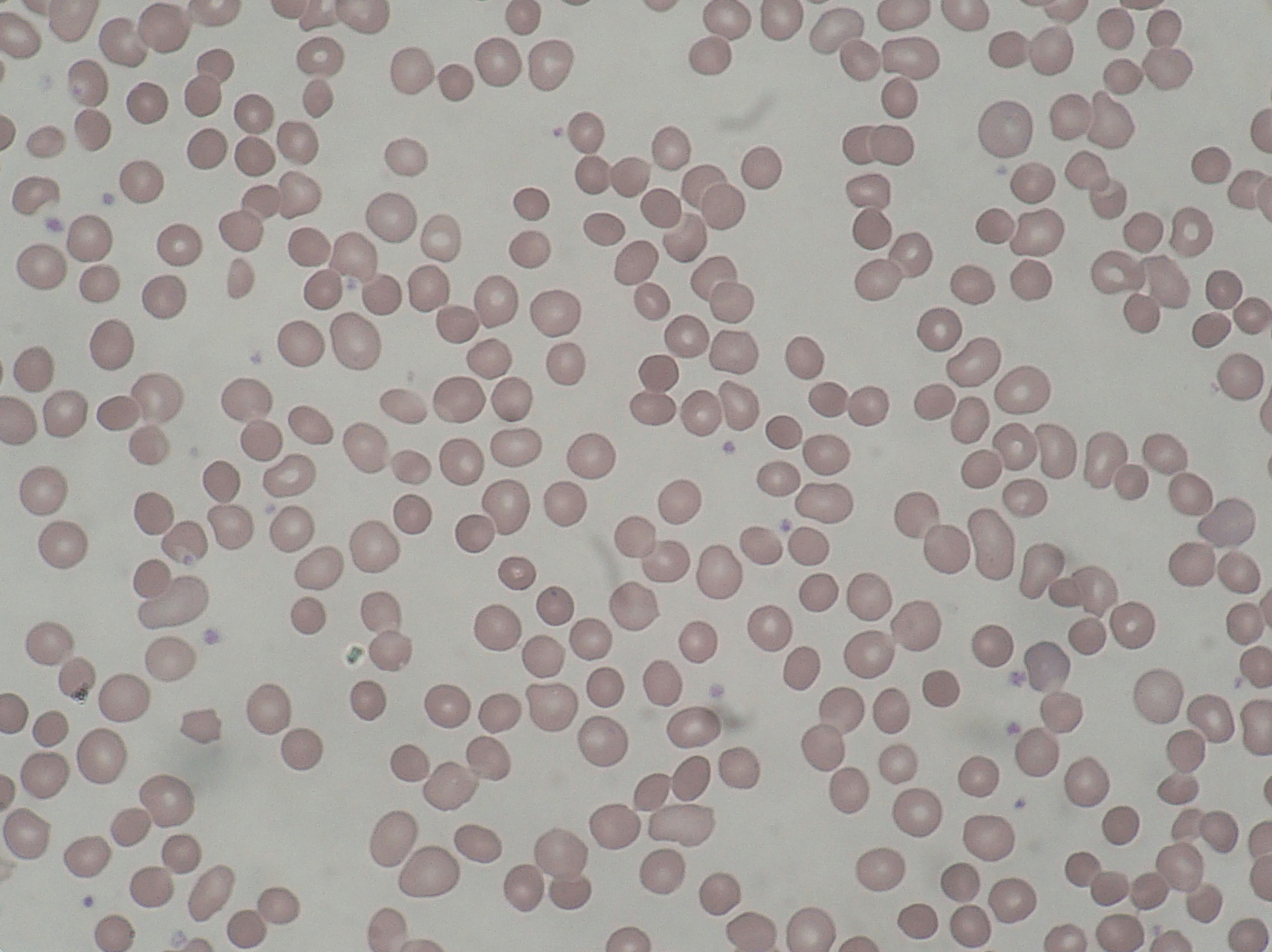WBR0097
| Author | PageAuthor::William J Gibson |
|---|---|
| Exam Type | ExamType::USMLE Step 1 |
| Main Category | MainCategory::Genetics, MainCategory::Histology |
| Sub Category | SubCategory::Hematology |
| Prompt | [[Prompt::A 3 week old newborn is brought into the pediatric emergency department by his mother for colic and the appearance of jaundice of the past several days. On physical exam, the child’s spleen is readily palpable. Laboratory values reveal hyperbilirubinemia, and decreased RBC count. A blood smear from the child is shown below. Which of the following is the most likely cause of this child’s condition?
{{#!:
|
| Answer A | AnswerA::Mutation of glutamic acid to valine in the Beta globin gene |
| Answer A Explanation | AnswerAExp:: |
| Answer B | AnswerB::Mutation of three copies of the alpha-globin gene |
| Answer B Explanation | AnswerBExp:: |
| Answer C | AnswerC::Mutation of ankyrin |
| Answer C Explanation | AnswerCExp:: |
| Answer D | AnswerD::Mutation of spectryin |
| Answer D Explanation | AnswerDExp:: |
| Answer E | AnswerE::Nonsense mutation in the beta-globin gene |
| Answer E Explanation | AnswerEExp:: |
| Right Answer | RightAnswer::C |
| Explanation | [[Explanation::The patient in this vignette is most likely suffering from hereditary spherocytosis. Hereditary sphereocytosis is an autosomal dominant condition which causes an auto-hemolytic anemia characterized by the production of red blood cells that are sphere-shaped rather than bi-concave disk shaped (donut-shaped), and therefore more prone to hemolysis. On a blood smear, Howell-Jolly bodies may be seen within red blood cells. Signs and symptoms include anemia, jaundice, and an enlargedspleen (splenomegaly). Acute cases can threaten to cause hypoxia through anemia and acute kernicterus through hyperbilirubinemia, particularly in newborns. Most cases can be detected soon after birth. In a peripheral blood smear, the red blood cells will appear abnormally small and lack the central pallor that is present in normal red blood cells. These changes are also seen in non-hereditary spherocytosis, but they are typically more marked in hereditary spherocytosis. The number of immature red blood cells (reticulocyte count) will be elevated. Hereditary spherocytosis is caused by a variety of molecular defects in the genes that code for spectrin (alpha and beta), ankyrin, band 3 protein, protein 4.2, and other erythrocyte membrane proteins. Mutations in ankyrin are the most common.
References: First Aid page 90, 379, 384
Educational Objective: Hereditary spherocytosis is caused by mutations in the ankyrin and spectrin genes. Ankyrin mutations are the more common of the two. |
| Approved | Approved::Yes |
| Keyword | |
| Linked Question | Linked:: |
| Order in Linked Questions | LinkedOrder:: |
